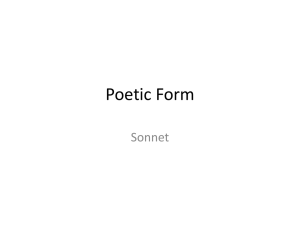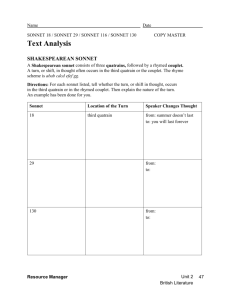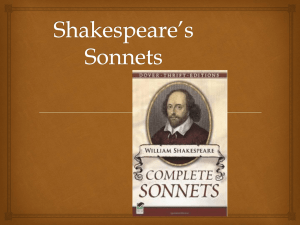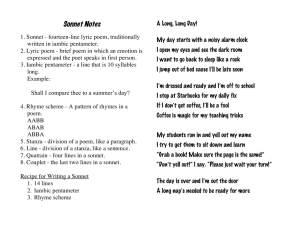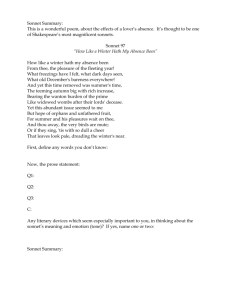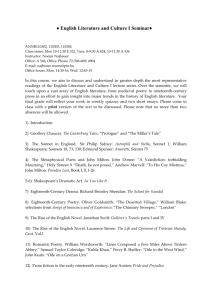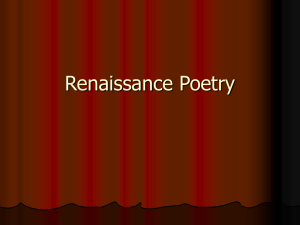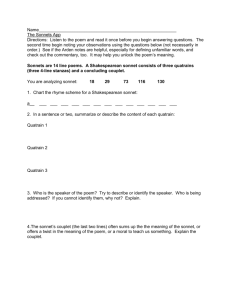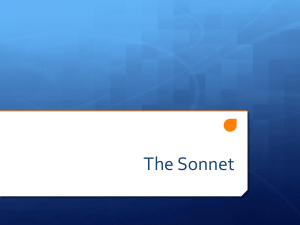When I have fears that I may cease to be When I have fears that I
advertisement
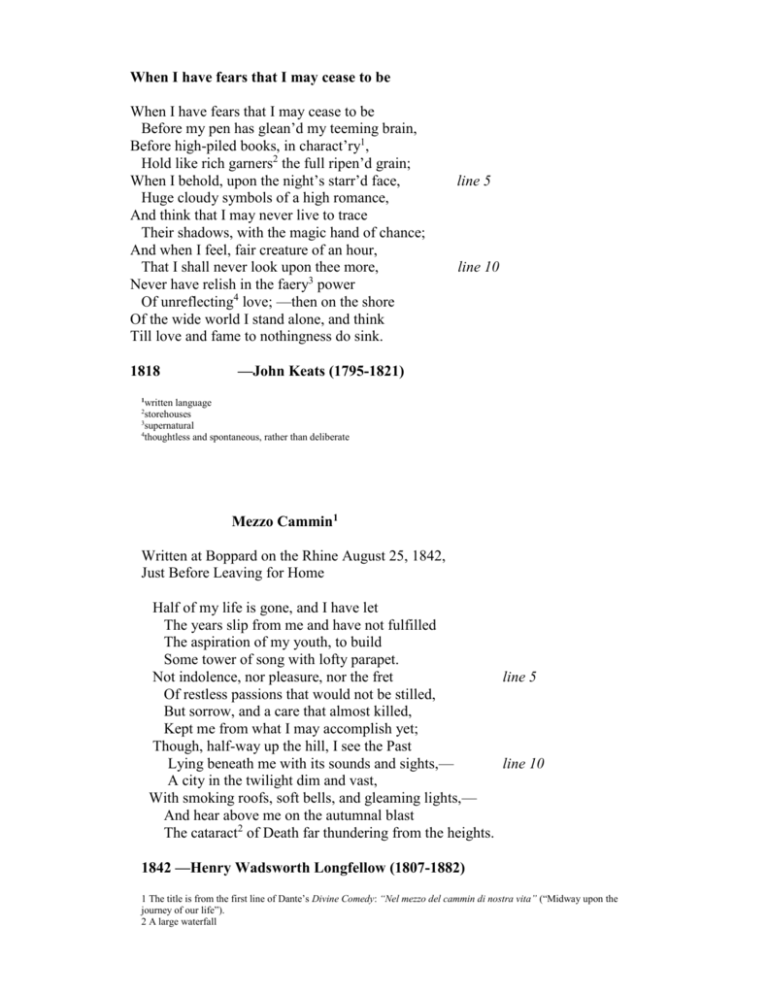
When I have fears that I may cease to be When I have fears that I may cease to be Before my pen has glean’d my teeming brain, Before high-piled books, in charact’ry1, Hold like rich garners2 the full ripen’d grain; When I behold, upon the night’s starr’d face, Huge cloudy symbols of a high romance, And think that I may never live to trace Their shadows, with the magic hand of chance; And when I feel, fair creature of an hour, That I shall never look upon thee more, Never have relish in the faery3 power Of unreflecting4 love; —then on the shore Of the wide world I stand alone, and think Till love and fame to nothingness do sink. 1818 line 5 line 10 —John Keats (1795-1821) 1 written language storehouses 3 supernatural 4 thoughtless and spontaneous, rather than deliberate 2 Mezzo Cammin1 Written at Boppard on the Rhine August 25, 1842, Just Before Leaving for Home Half of my life is gone, and I have let The years slip from me and have not fulfilled The aspiration of my youth, to build Some tower of song with lofty parapet. Not indolence, nor pleasure, nor the fret line 5 Of restless passions that would not be stilled, But sorrow, and a care that almost killed, Kept me from what I may accomplish yet; Though, half-way up the hill, I see the Past Lying beneath me with its sounds and sights,— line 10 A city in the twilight dim and vast, With smoking roofs, soft bells, and gleaming lights,— And hear above me on the autumnal blast The cataract2 of Death far thundering from the heights. 1842 —Henry Wadsworth Longfellow (1807-1882) 1 The title is from the first line of Dante’s Divine Comedy: “Nel mezzo del cammin di nostra vita” (“Midway upon the journey of our life”). 2 A large waterfall Respond to the following in your CRJ – Remember to go beyond the obvious and to support your assertions with the text. The Sonnet Ron Padgett, in The Handbook of Poetic Forms points out that “the sonnet involves a certain way of thinking: the setting up or development of a thought or idea which is brought to a conclusion at the end of the poem” (189). In a Shakespearean or Elizabethan sonnet (also called English sonnet), typically there are three quatrains and one couplet. Traditionally, after the first two quatrains there is a shift in ideas, a volta; however, sometimes the three quatrains all deal with the same subject matter. The closing couplet brings closure to the issue under contemplation. In the sonnet’s Italian form (or Petrachan form) the octave (first eight lines— rhyme scheme typically abbaabba) presents a narrative, states a proposition, or raises a question; the sestet (last six lines—rhyme scheme cdecde, cdcdcd, or cdedce) drives home the narrative by making an abstract comment, applies the proposition, or solves the problem. “When I have fears that I may cease to be” 1. Explain the progression of thought in this Elizabethan sonnet. 2. In the last 2 ½ lines, what stands out to you as important? Why? “Mezzo Cammin” 3. Explain the division of thought in this Italian sonnet. 4. What is the effect of the comparison and imagery in lines 9-12? And what is added to the meaning of the poem by the comparison and imagery in lines 13-14? Both Poems 5. How is the primary concern of each poem similar? How is the tone different? How do you know?
